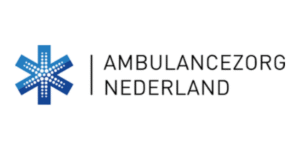Cenex Nederland, commissioned by AmbulanceZorg Nederland (AZN), has conducted a study on the charging infrastructure required in a future scenario where all ambulances in the Netherlands are battery-electric. To support this, Cenex developed a simulation model that uses historical travel data from the ambulance fleet to provide insights into vehicle operations, energy consumption, and charging needs during charging events. The primary objective was to map out the charging demand when ambulance stations and hospitals are used as charging locations.

Research Methodology
This study was conducted using a historical telemetry dataset spanning 14 months from 2023 to 2024, covering 1,015 ambulances in the Netherlands (limited to vehicles suitable for patient transport). The anonymised dataset, provided at the postcode level (PC4), contained approximately 7 million individual trips. The analysis included 86 hospitals and 269 ambulance stations as potential charging locations. To support the study, Cenex developed a simulation model to analyse the historical data and gain insight into vehicle operations, energy consumption, and charging requirements in a fully battery-electric ambulance fleet scenario.
The simulation model evaluates various scenarios in which ambulances charge at hospitals, ambulance stations, or a combination of both. In addition to historical data, the model considers the impact of battery capacity, charging speed, and required plug-in durations on overall charging demand.
A journey pattern analyses showed AZN the daily distances and energy consumption of their fleet as well as the main locations where their vehicles have opportunities to charge. Analysing the time spend at those locations gives an indication of available charge time, which in turn is input for the charging infrastructure analysis.
The results give an indication of the necessary charging infrastructure to complete current trips, and identify the scenarios in which this infrastructure would be insufficient.

